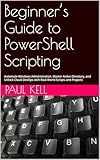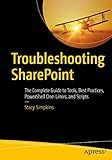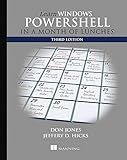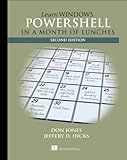Best PowerShell Automation Tools to Buy in December 2025

Beginner’s Guide to PowerShell Scripting: Automate Windows Administration, Master Active Directory, and Unlock Cloud DevOps with Real-World Scripts and Projects



Troubleshooting SharePoint: The Complete Guide to Tools, Best Practices, PowerShell One-Liners, and Scripts



AWS Tools for PowerShell 6: Administrate, maintain, and automate your infrastructure with ease



Learn PowerShell Toolmaking in a Month of Lunches



Learn Windows PowerShell in a Month of Lunches



PowerShell Advanced Cookbook: Enhance your scripting skills and master PowerShell with 90+ advanced recipes (English Edition)



PowerShell for Sysadmins: Workflow Automation Made Easy



Learn Windows PowerShell in a Month of Lunches


To target an Outlook subfolder using PowerShell, you can use the Outlook.Application COM object to connect to your Outlook profile, navigate to the specific folder, and retrieve or manipulate its contents. This can be done by iterating through the folders in the Outlook namespace and finding the subfolder by its name or path. Once you have identified the subfolder, you can perform various operations such as reading emails, moving items, or creating new items within that specific folder. Powershell provides a flexible and powerful way to automate tasks within Outlook, making it easier to manage and organize your emails and other Outlook items.
How to move emails to a subfolder in Outlook using PowerShell?
To move emails to a subfolder in Outlook using PowerShell, you can use the following script:
Add-Type -AssemblyName "Microsoft.Office.Interop.Outlook" $outlook = New-Object -ComObject Outlook.Application $namespace = $outlook.GetNamespace("MAPI") $inbox = $namespace.GetDefaultFolder([Microsoft.Office.Interop.Outlook.OlDefaultFolders]::olFolderInbox) $subfolder = $inbox.Folders | Where-Object {$_.Name -eq "YourSubfolderName"}
$emails = $inbox.Items | Where-Object {$_.Subject -like "*YourSearchCriteria*"}
foreach ($email in $emails) { $email.Move($subfolder) }
Replace "YourSubfolderName" with the name of the subfolder you want to move the emails to, and replace "YourSearchCriteria" with any criteria you want to use to filter the emails you want to move.
Save the script as a .ps1 file and then run it in a PowerShell window. This script will move emails that match the specified search criteria to the specified subfolder.
What is the purpose of targeting a subfolder in Outlook using PowerShell?
Targeting a subfolder in Outlook using PowerShell allows you to perform specific actions or operations on that particular folder. This can be useful for tasks such as managing emails, organizing messages, retrieving specific information, or automating repetitive tasks within that subfolder. By using PowerShell to target a subfolder, you can streamline your workflow and customize your interactions with Outlook to better suit your needs.
How to navigate to a specific subfolder in Outlook using PowerShell?
You can use the following script to navigate to a specific subfolder in Outlook using PowerShell:
# Create Outlook application object $outlook = New-Object -ComObject Outlook.Application
Get the root folder
$rootFolder = $outlook.Session.DefaultStore.GetRootFolder()
Request user input for the subfolder name
$subfolderName = Read-Host "Enter the name of the subfolder"
Get the subfolder by name
$subfolder = $rootFolder.Folders.Item($subfolderName)
Display the folder path
Write-Output "Navigated to folder: $($subfolder.FolderPath)"
Clean up
$outlook = $null
Simply run this script in your PowerShell console, enter the name of the subfolder when prompted, and it will navigate to the specified subfolder in Outlook.
What is the importance of proper folder structure when targeting subfolders in Outlook using PowerShell?
Proper folder structure is important in Outlook when targeting subfolders using PowerShell because it allows for easier navigation and organization of email data. A clear and organized folder structure makes it easier to locate and access specific folders, reducing the likelihood of errors when targeting subfolders programmatically.
By implementing a logical and consistent folder structure, it becomes easier to automate tasks and perform actions on specific subfolders using PowerShell. This can help improve efficiency and productivity when managing emails and performing tasks in bulk.
Additionally, having a well-organized folder structure can help prevent accidental deletions or modifications of important emails, as they are less likely to be misplaced or overlooked in a cluttered inbox.
Overall, a proper folder structure in Outlook is essential for effective email management and can enhance the functionality and performance of PowerShell scripts targeting subfolders.
